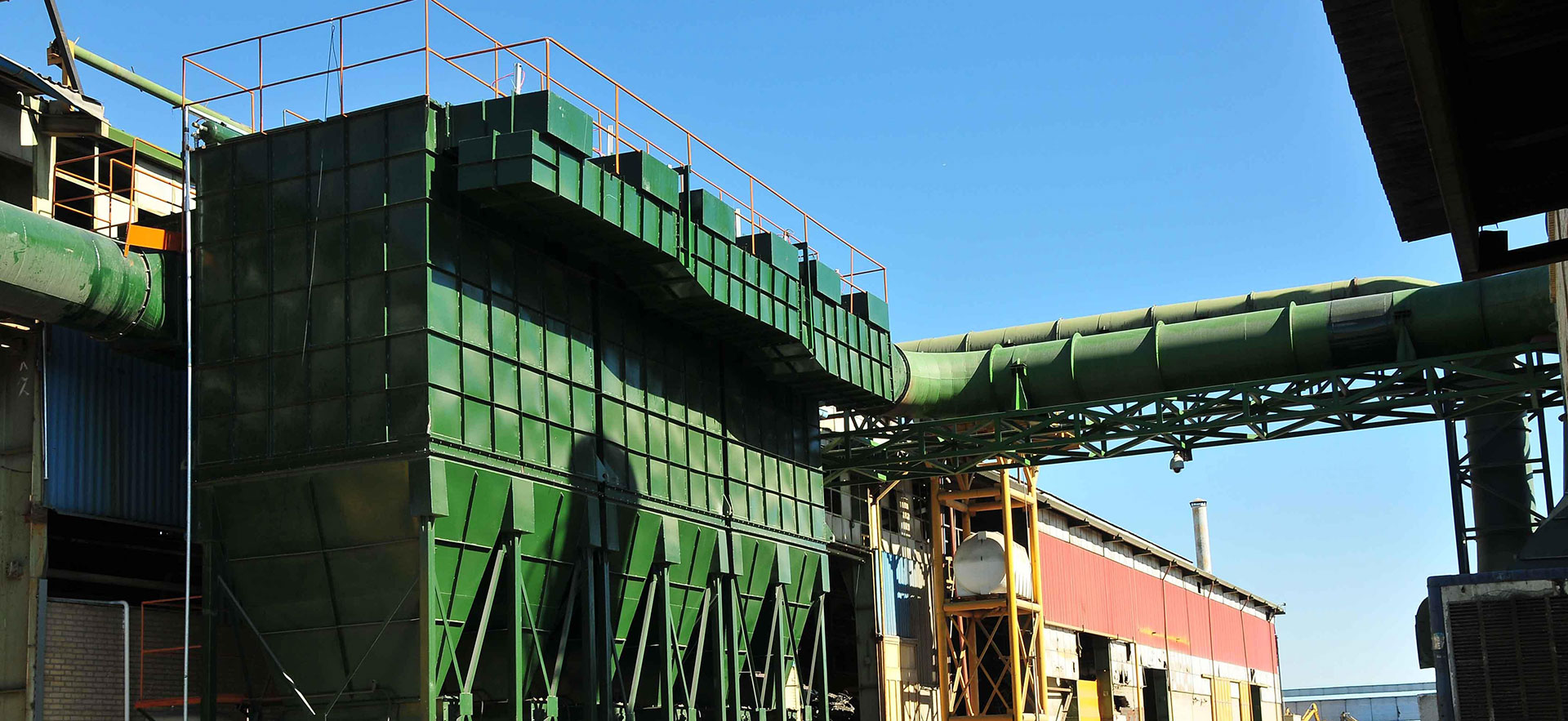What is a Filter Bag?
A bag filter is a container which consist a number of hanging bags attached to cage holders. As the gas passes through the inlet valve to the outlet of the filter, the dust settles on the outer surface of the bag. Then, at certain times, by applying an air pulse, the dust is shaken off the bag and poured into the bottom hopper of the filter. In this way, the dust separates from the gas. Another equipment used extensively for air cleaning in the cement industry is bag filters. These types of filters have a high dusting efficiency, with up to 99.9% efficiency depending on the type of dust. The limiting factor is its inlet gas temperature. The use of bag fibers has expanded in order to recent advances in their production.
The bags can stand temperatures above 200 ° C since using the new texture artifacts.
The following factors play a key role in bag filters:
- Material of bags
- Dusting area
- The structure and shape of the bags
- Type of dust shaking system of bags
These types of filters are widely used in different parts of the cement industry.
Pulse jet filters mainly have six main component which includes:
- Inlet duct and dust carrier gas inlet chamber
- Filter bags
- Grid page
- Pulse valves
- Blowing tubes into bags
- Refined gas outlet and duct
Process description of Bag filters
The gas which carrying the dust enters the filter and is returned by baffle to the hopper. Dusty gas enters one of the filter houses and larger particles of dust move to the hopper upon arrival under the influence of their weight and rest of them accumulate on the filter bags. When the thickness of the dust which accumulates on the bags reach to the point where the flow is difficult to pass, the bag cleaning process begins.
The inlet function is to reduce the gas velocity and allow the big particles to fall freely into the hoppers beneath the filter and allow the gas which consists small dust particles distribute uniformly between the bags. The gas distribution does not cause excessive wear on the bags.
The gas carrying the dust goes into the bags and then enters the cleaning air compartment and then is sent to the chimney by a suction fan. At the same time as the above operation is being carried out continuously, the pulse air is periodically blown into the bags by means of pulse valves and nozzles through the programmed electrical panel, separating the material from the outer surface of the bags. The isolated material enters the harper and is then driven through filtration systems.
Each row of filter bags is cleaned by compressed air using a separate nozzle and tube mounted on the top of the bags. For this purpose, compressed air tanks are cleaned. For this purpose, compressed air tanks with complementary diaphragm valves are located at the end of each nozzle. These diaphragm valves are opened and closed by solenoid valves that themselves operate periodically with an electronic controller. Compressed air coming out of the compressed air tank is blown into the bag through the nozzle blower tubes and injector tube jet located just above the bags. Due to the injector properties, some of the clean chamber air is also sucked into the bags. Using this method, even six-meter long bags can be cleaned.
The compressed air pulse that cleans the bags compared to the positive and negative impact electrodes in the electrodes according to the size of the equipment concerned, such as gearboxes, hinges, positive and negative anchors, no damping, and mechanical repairs and adjustments. It doesn’t need to be overwhelming.
An important issue to consider in the use of bag filters for dusting combustion gases and clinker baking is the amount of filter bags against high temperature gases. With the change in clinker production technology, the use of bag filters has undergone changes, the last of which is lowering the temperature of the exhaust gases to a temperature below 200 ° C. The use of bag filters will de-dust the gases up to 10 mg / m3.
An important factor to consider when determining a dusting area is determining the proper speed of the dusting operation to be taken into account. The filters are divided into bags according to the type of cleaning method. The bags are cleaned both online and offline, the container is not out of line and is still in the gas path, but the container is offline and isolated after the cleaning is completed. Opens the line. The bags can be cleaned in three ways: reverse air method, air jet method, and mechanical method.
In the past, mechanical shaking was generally used, and sometimes reversed air. But Pulse jet cleaning is currently used. Pulse jet filters use a cylindrical metal cage called a cage to prevent the bags from shrinking. The cage and the bag hang vertically from a perforated plate called the Sheet Tube. To separate the soil layer sitting on the outer surfaces of the bags, a high-pressure compressed air pulse is applied to the openings of the bags from above. In other words, the dust that sweeps over the filter bags is pumped into the hopper by short and fast air pulses. Dust enters the transmission line through the filter’s bottom hopper.

